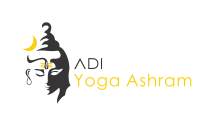The Half Locust Pose, or Ardha Shalabhasana in Sanskrit, is one of the dynamic asanas that work on your back muscles and has several advantages for your spine and nervous system. In this pose, you are lying on your belly and raising one leg at a time, so it is easy going but also effective for the newbies. Let’s break down Ardha Shalabhasana and see why it matters in the world of yoga.
Etymology and History:
The word “Ardha Shalabhasana” comes from the Sanskrit language, in which “Ardha” means half and “Shalabha” means locust or grasshopper.
This is a posture that can be traced back thousands of years in yoga tradition, and therefore rooted both physically and philosophically within the practice of yoga.
Pose Technique:
- Prone position with hands beneath the thighs, palms down – or other position with clenched fists and direct pressure on forearms.
- Keep both legs straight during the movement and drop the chin to the ground a little for stretching of neck muscles.
- Lift one leg at a time with muscles of the back so that the pelvis does not tilt or rotate.
- Inhale in the the starting position, hold the breath lifting your leg and breathe out when you lower it.
Benefits:
- Inhale in the the starting position, hold the breath lifting your leg and breathe out when you lower it.
- Relieves constipation when not painful.
- Tones back muscles, stimulates nerves, and enhances concentration.
Practice Note:
- Raise the left leg first to apply pressure on the right side of the abdomen, massaging the ascending colon.
- Do 5 full passes dynamically or 3 static.
Variation – Advanasana
- Lay flat on your belly, legs on top of one another, and forehead to the ground.
- Arms stretched over head; raise one leg, head, and opposite arm simultaneously.
- Remain in each position, focus on the synchrony with your breaths.
- Good for beginners, strengthening weak backs, and bringing about awareness of movement coordination with respiration.
Breathing and Duration:
- Breathe in when lifting the leg; hold breath while in the final position; breathe out as you lower leg.
- Repeat up to 5 rounds or however many you can control while linking your breath with movement.
Awareness:
- Physical awareness of the coordination between breath and movement, and diagonal stretch..
- Consciousness on the Swadhisthana chakra.
Learn to know more about yoga poses so you can join yoga teacher training in rishikesh and 100 hour yoga teacher training in rishikesh and 200 hour yoga teacher training in rishikesh and 300 hour yoga teacher training in rishikesh



